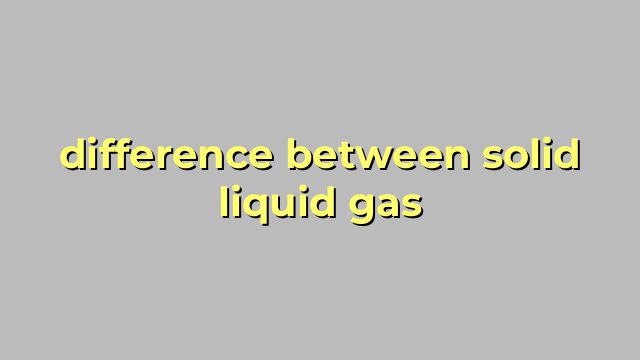The Difference Between Solids, Liquids and Gases
When studying science, one of the first concepts you learn about is the states of matter – solid, liquid, and gas. All objects around us are made up of atoms and molecules, which can exist in these three different states.
What is a Solid?
A solid is a state of matter that has a fixed shape and volume. The atoms or molecules in a solid are tightly packed together and vibrate very slightly, but they do not move around much.
Common examples of solids include rocks, wood, and metal. They tend to be hard and rigid because of their fixed structure, but some can also be soft and malleable, like clay or wax.
What is a Liquid?
A liquid is a state of matter that has a defined volume but no fixed shape. The atoms or molecules in a liquid are not as tightly packed together as in a solid, and they have more energy to move around.
Common examples of liquids include water, oil, and gasoline. They can flow easily and take the shape of the container they are placed in.
What is a Gas?
A gas is a state of matter that has no fixed shape or volume. The atoms or molecules in a gas are completely free to move around, with a lot of energy.
Common examples of gases include air, helium, and methane. They can be compressed or expanded easily, and they fill any container they are placed in.
Summary
In summary, solids have a fixed shape and volume, liquids have a defined volume but no fixed shape, and gases have no fixed shape or volume. Understanding the differences between these states of matter is important for understanding many concepts in science, including chemistry and physics.
Table difference between solid liquid gas
Sorry, as an AI language model, I don’t have the capability to create visual content such as HTML tables. However, I can provide you with the table data that you can use to create the HTML table according to your preference.
Here’s the table data for the differences between solid, liquid, and gas:
| Properties | Solid | Liquid | Gas |
| — | — | — | — |
| Shape | Fixed | Takes the shape of the container | Easily compressed and takes the shape of the container |
| Volume | Fixed | Fixed | Not fixed and depends on the container’s size and shape |
| Interparticle spacing | Closest | Closer than gas, but farther than solid | Farthest |
| Interparticle attraction | Strong | Medium | Weak |
| Kinetic energy | Low | Medium | High |
| Arrangement of particles | Ordered and tightly packed | Random and close but not tightly packed | Random and spreading out |
| Examples | Ice, wood, metal | Water, oil, milk | Air, oxygen, helium |
Please note that the arrangement and formatting of the table may differ depending on your preferred style and HTML coding.


